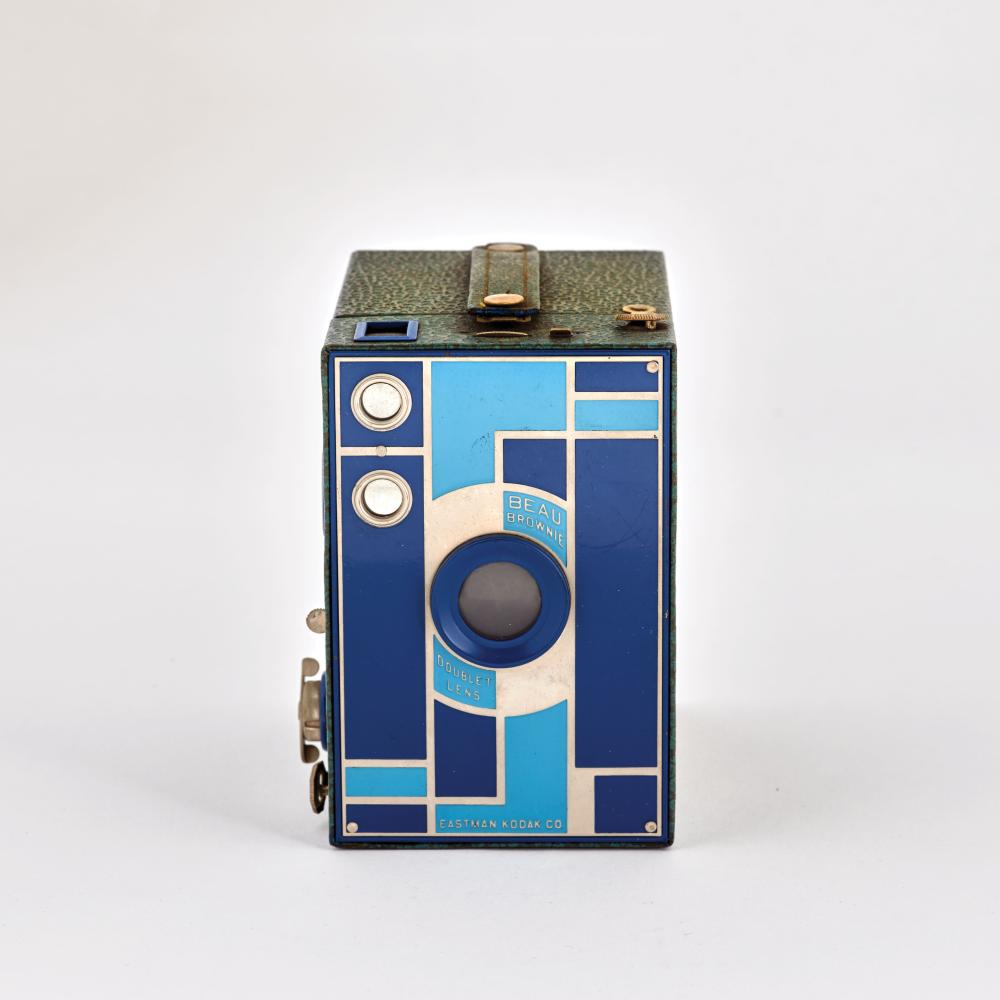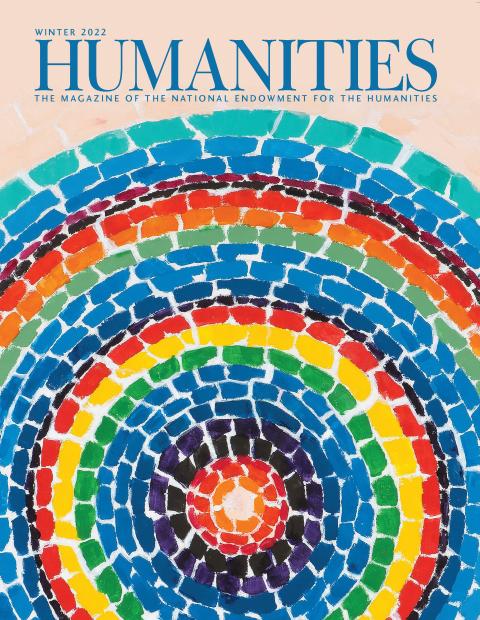In 1900, the Eastman Kodak Company launched the Brownie camera and forever changed American culture. A mass-market, amateur camera with an affordable one-dollar price tag, the product transformed photography from an elite and highly technical activity into a hobby that could be enjoyed by millions of middle- and working-class men, women, and even children. As the Brownie slogan promised, the camera was so accessible, anyone could master the art of picture-taking: “You press the button, we do the rest.”
The enormous commercial success of the Brownie led Eastman Kodak to continue manufacturing new and improved versions into the 1950s. This striking model, called the “Beau Brownie,” was produced from 1930 to 1933 and conceived by industrial designer Walter Dorwin Teague, a frequent Kodak collaborator. The basic Brownie’s chic and cosmopolitan cousin, the “gaily dressed” Beau Brownie—in the words of one contemporary advertisement—featured a modernist faceplate inspired by art deco’s geometric forms and lines. The camera could be purchased with a sleek leather carrying case and came in five colors: black, tan, green, rose, and blue, as shown in this example held by the George Eastman Museum in Rochester, New York, whose collections and programs have been supported by numerous NEH awards, most recently, a 2020 preservation grant.
Merging style and function, the Beau Brownie underscores the many ways in which technology aids in self-expression. Decades before the rose gold iPhone, there was the Beau Brownie camera.


